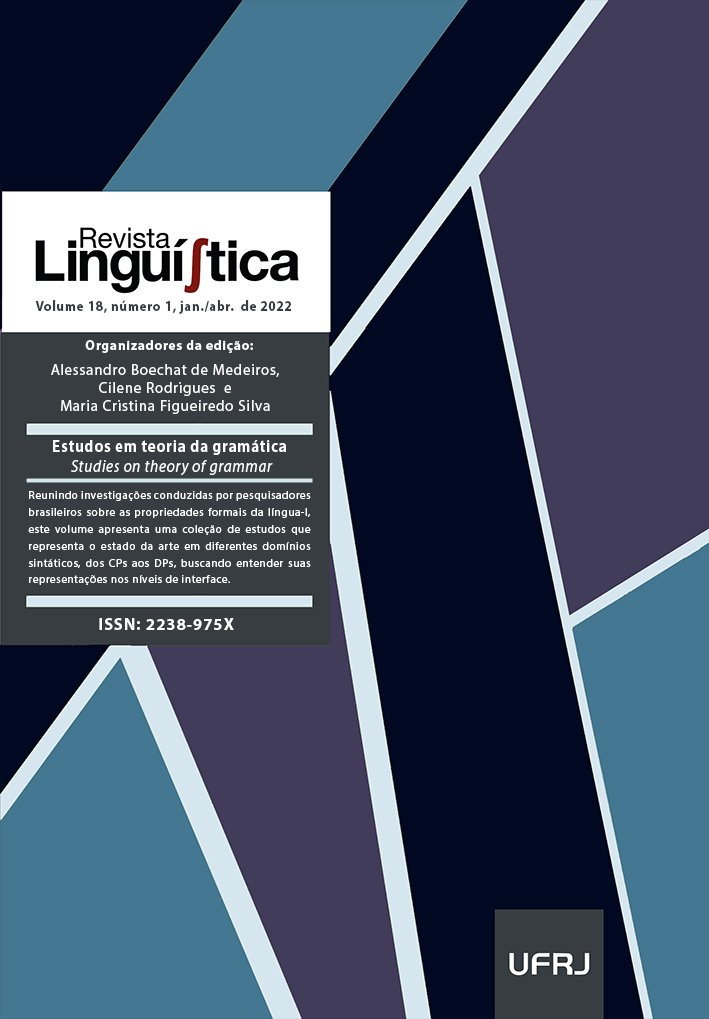Causal clauses in Brazilian Portuguese
DOI:
https://doi.org/10.31513/linguistica.2022.v18n1a53030Keywords:
causal clauses, adverbial clauses, subordination, Brazilian Portuguese.Abstract
This paper discusses causal clauses in Brazilian Portuguese introduced by porque ‘because’. It is proposed that these clauses are adjoined to three distinct positions in the matrix. To describe these different levels of integration, I adopt the classification proposed by Frey (2016) and Badan and Haegeman (2022), in which adverbial clauses are classified as central (internally attached to TP), peripheral (externally attached to TP), and non-integrated (attached to a projection linked to the speech act). This syntactic description is not obtained from the meaning of the clauses: the adjunction positions are defined from syntactic diagnostics involving the scope domain of the matrix. The paper also discusses causal clauses with respect to the well-known relations established by Sweetser (1990) between adverbials and the matrix: relations in the domain of content, in the epistemic domain, and in the domain of speech acts. Although, at first glance, there seems to be a direct correspondence between the three adjunction positions and the three domains established by Sweetser, it is proposed, based on Frey (2016), that this correspondence takes place as follows: content clauses can be adjoined to all three positions, epistemic clauses can be peripheral or non-integrated, and speech act clauses can only be non-integrated.Downloads
Published
Issue
Section
License
Authors who publish in the Revista Linguí∫tica agree with the following terms:
The authors maintain their rights, ceding to the journal the right to first publication of the article, simultaneously submitted to a Creative Commons license permitting the sharing with third-parties of published content as long as it mentions the author and its first publication in the Revista Linguí∫tica.
Authors may enter into additional agreements for the non-exclusive distribution of their published work (for example, posting in online institutional or non-profit repositories, or book chapters) so long as they acknowledge its initial publication in the Revista Linguí∫tica.

The journal Revista Linguí∫tica is published by the Post-Graduate program in Linguistics of UFRJ and employs a Creative Commons - Attribution-NonCommercial 4.0 International (CC-BY-NC).









